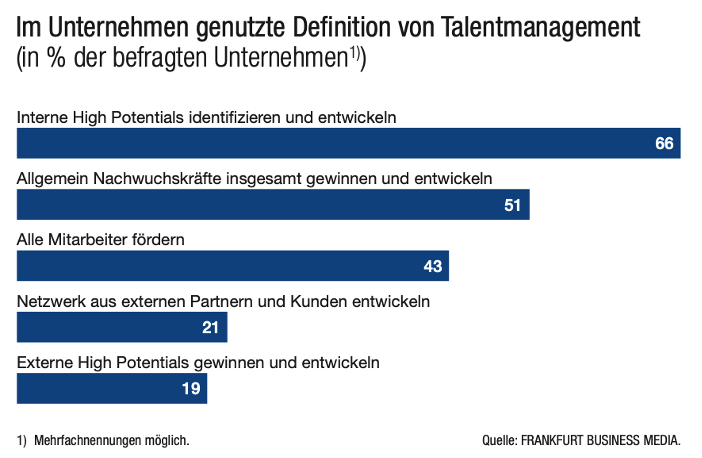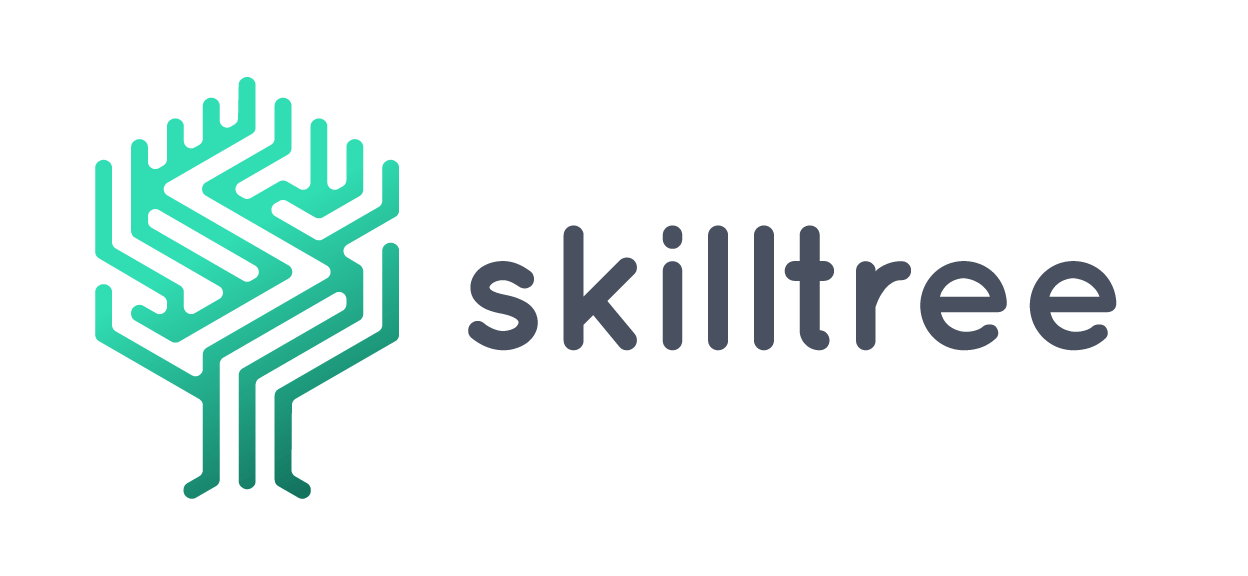Talented employees with special qualifications and skills are in high demand on the labor market. The shortage of skilled workers in recent years has shown how important it is to retain, promote and find talent in the long term. Human resources management attributes therefore great importance to strategic talent management.
Talent management definition
Talent management describes strategies, measures and methods used in companies to ensure that employees’ key positions or, more generally, qualifications are filled. Measures include planning, discovering, attracting, developing and retaining talent.
What a talent is, usually always corresponds to the definitions of organizations. Certain talents are often referred to as high potentials. High potentials are employees who, due to their special qualifications and personal characteristics, make a valuable contribution to the company’s value creation.
The following survey shows how differently talents can be defined and managed in organizations.

How talent management is implemented depends on the company conditions and the strategy selection. Among other things, factors such as industry, corporate structure or the employees’ areas of responsibility determine how talent management is structured.
Info: Unterschied Talent Management zu Skill Management: Obwohl die zwei Begriffe eine scheinbar ähnliche Bedeutung haben, gibt es klare Unterschiede. Talentmanagement befasst sich mit einem ganzheitlichen Prozess, welcher Talente entdeckt, fördert und gewinnt; während Skill Management sich primär mit dem Entdecken von Talenten befasst.
Why is talent management important?
The goal of talent management is to possess, retain and promote qualified employees for the organization, both in the present and in the future, in order to ensure needed skill resources and manage fitting successions.
Hierfür ist es notwendig zu klären, welche Qualifikationen Mitarbeitende benötigen, damit Organisationsziele umgesetzt werden können. Stellenprofile bzw. Definitionen von Rollen als Teil einer Laufbahnplanung sind daher ein Teil der Voraussetzungen eines Talent Managements.
Das Messbar machen von etwaigen Kompetenzlücken in Form von Soll-Ist-Vergleichen oder durch anderen Kennzahlen ist für ein strategisches Talentmanagement und dessen HR-Controlling notwendig.
Talent Management Maßnahmen & Modell
Ein Talentmanagement System kann in Form eines Kreislaufes dargestellt werden. Dieser Kreislauf kann einzelne Schritte auslassen, verdeutlicht aber als Ganzes, die Zusammenwirkung unterschiedlicher Personalentwicklungsmaßnahmen.
Einzelne Schritte sind etwa die Nachfolgeplanung, Laufbahnplanung, Skill Management, Employer Branding und die Fort- und Weiterbildung.
Hierzu gibt es einen weiteren Artikel, welcher Einblicke, in den Kreislauf und den Maßnahmen liefert um tiefer in die Materie des Talentmanagements einzutauchen.
Zwei wesentliche Strategien im Talent Management
Essentially, a distinction can be made between two approaches to talent management strategy.
High potential talent management strategy
This strategy aims to identify, promote and retain almost exclusively talented employees. Talent development is therefore primarily limited to a small group of people. This group of people usually corresponds to executives and key specialists with special skills, who are in high demand on the labor market and are indispensable for the fulfillment of corporate goals. Personnel development measures are therefore primarily geared to the needs of this group of people and often neglect to promote and develop other employees.
Holistic talent management strategy
The holistic talent management strategy does not deal with a focused group of people like the high potential strategy, but with all employees equally. The focus of this strategy is on the talents of individual employees and their individual development. In this context, talent is understood to mean that employees achieve above-average performance in individual disciplines. These talents are then considered and utilized in various work projects. Employees are often personally involved in this talent management strategy (employee engagement), for example through surveys in employee appraisals. The holistic talent management approach is often applied in agile structured organizations.
Digital Talent Management Systems
Talent Management can be digitized in many HR processes and phases. It is important to find the right software for talent management. Since talent development can have different focuses as well as strategies depending on the organization, it is often a challenge to find the right talent management software.
The following, 4 criteria for the right talent management software.
- Does my talent management strategy fit the software?
Whether high potential, holistic, or any other talent management strategy, a strategy approach must be chosen before acquiring HR software that will be used for talent development. Often, that choice of talent management strategy is shaped by the existing or planned corporate culture.
- Which processes or phases of talent management can I already map?
As shown in the talent management model, there are different phases and processes that can be gone through. Often, some of them are already covered in HR development before a new HR system is purchased. Therefore, it is important to go through all phases of talent management and document which processes are already supported to find the appropriate complement.
- What interfaces are needed?
Since talent management is a process put together individually by the company and may require different personnel development measures, it is necessary to think about which data should be linked and where any interfaces are required.
- How can the administrative burden be reduced?
Developing talent also means fostering interpersonal relationships. After all, only employees who are satisfied with their work situation and prospects will remain loyal to the company. Interpersonal relationships, including those between HR managers and employees, are necessary to improve or adapt work situations and perspectives. In order to have time for this, it is necessary to keep the administrative effort of systems to a minimum. In order to have time for this, it is necessary to keep the administrative effort of systems to a minimum.
Talent management can be that easy.
Check out how smart and easy it is with Skilltree .
